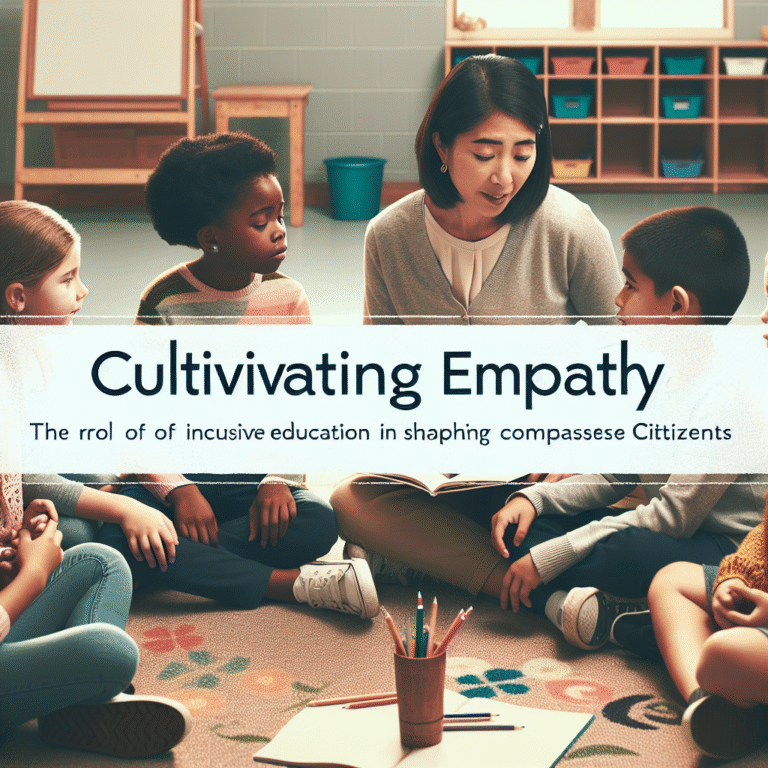
Introduction
In today’s ever-evolving educational landscape, the effectiveness of traditional teaching methods is under scrutiny. While individual study remains important, one transformative approach – collaborative learning – is emerging as a powerful tool in driving student success. This article dives deep into Building Bridges: The Impact of Collaborative Learning on Student Success, exploring how teamwork, interaction, and mutual support foster an environment where students thrive.
Imagine a classroom where students engage, share diverse perspectives, and solve complex problems together. This isn’t just a dream; it’s a reality made possible through collaborative learning. Not only does it enhance understanding of the subject matter, but it also cultivates vital skills necessary for the modern workforce.
Why should educators and institutions embrace this approach? The answer lies in a wealth of research, real-world applications, and success stories that illustrate how these collaborative strategies build bridges to significant educational outcomes.
The Principles of Collaborative Learning
Collaborative learning is founded on several core principles which emphasize interaction and cooperation. These include:
1. Active Engagement
In collaborative learning environments, students are active participants, not passive receivers of information. This active engagement helps solidify understanding and retention of knowledge.
2. Social Interaction
Students gain insights from each other, leading to a richer learning experience. Social interaction fuels motivation and enhances emotional investment in learning.
3. Shared Responsibility
Working together fosters a sense of accountability among peers, encouraging students to take ownership of their learning and contribution to group goals.
4. Diverse Perspectives
Groups contain varied backgrounds and viewpoints, promoting critical thinking and creativity. Exposure to different perspectives can lead to more thorough problem-solving.
The Science Behind Collaborative Learning
Research consistently shows that collaborative learning leads to improved educational outcomes. Here are some key findings:
Higher Academic Achievement: A study found that students involved in collaborative learning scored significantly higher on assessments compared to those who studied independently.
Enhanced Social Skills: Collaborative activities improve communication, conflict resolution, and interpersonal skills, essential for success beyond the classroom.
- Life-Long Learning: Engaging with peers fosters a mindset of continuous learning and adaptability, key traits in our rapidly changing world.
Case Study: The Success of Project-Based Learning
At an urban high school in Chicago, educators integrated project-based learning within their curriculum. Students worked in teams to design solutions for real-world problems, such as environmental sustainability.
Results:
- 76% of students reported improved teamwork skills.
- 85% of participants demonstrated a deeper understanding of the subject.
This model exemplifies Building Bridges: The Impact of Collaborative Learning on Student Success, as it not only improved academic performance but also prepared students for real-world challenges.
Different Models of Collaborative Learning
Collaborative learning can take many forms. Here are a few effective models:
1. Think-Pair-Share
Students think about a question individually, then discuss with a partner before sharing their insights with the larger group. This model encourages all voices to be heard.
2. Jigsaw
In this model, each student becomes an expert on a specific segment of a topic and then teaches it to their peers. It ensures that every member contributes to the group’s understanding of the whole.
3. Group Investigations
Students work together to investigate a topic or problem, allowing for shared ownership of the learning process.
| Model | Description | Benefits |
|---|---|---|
| Think-Pair-Share | Individual thinking followed by peer discussion | Ensures participation |
| Jigsaw | Each student teaches a segment of content | Promotes accountability |
| Group Investigations | Collaborative inquiry into a topic | Enhances critical thinking |
Implementing Collaborative Learning in the Classroom
1. Structure Teams Effectively
Diverse groups enhance learning. Mix students of varying skill levels, backgrounds, and learning styles.
2. Set Clear Expectations
Provide rubrics that outline the goals and responsibilities for group tasks. This transparency helps students understand their roles within the collaborative framework.
3. Facilitate Communication
Encourage open communication by establishing ground rules for discussions. Foster an environment where students feel comfortable sharing ideas and challenging each other.
4. Incorporate Technology
Tools like Google Docs or collaborative platforms like Padlet can enhance collaborative learning by allowing students to work together seamlessly, regardless of geographical barriers.
Challenges and Solutions
While the benefits are clear, implementing collaborative learning can present challenges:
1. Unequal Participation
One common issue is that some students may dominate discussions while others remain silent.
Solution: Use structured roles within groups to ensure that each student is responsible for contributing.
2. Conflict Resolution
Disagreements can arise during group work, leading to frustration.
Solution: Teach conflict resolution strategies as part of the curriculum, equipping students with tools to navigate disagreements constructively.
3. Assessment Difficulties
Assessing individual contributions in a group can be tricky.
Solution: Implement peer evaluations and reflective essays where students can articulate their learning and contributions.
Real-World Applications
Across educational institutions worldwide, collaborative learning strategies are yielding positive outcomes.
Case Study: University Collaborative Initiatives
At Stanford University, a collaborative learning project focused on interdisciplinary studies brought together students from engineering, humanities, and social sciences. They collaborated on community projects addressing local issues.
Impact:
- 90% of students indicated that collaboration improved their problem-solving skills.
- Group projects led to innovative solutions benefitting the local community.
This case supports the idea of Building Bridges: The Impact of Collaborative Learning on Student Success, showing that interdisciplinary teamwork fosters unique insights.
Conclusion
Building Bridges: The Impact of Collaborative Learning on Student Success is profound and multi-faceted. By actively engaging students in collaborative environments, we cultivate not only academic excellence but also critical soft skills essential for the workforce.
Educators, administrators, and learners should embrace collaborative strategies to prepare students for a future where teamwork is crucial. The journey to student success is not a solitary path but a collective effort, one that beckons us to build bridges together.
FAQs
1. What is collaborative learning?
Collaborative learning is an educational approach where students work together in small groups to solve problems, complete tasks, and understand concepts.
2. How does collaborative learning improve student performance?
Research shows that collaborative learning enhances engagement, accountability, and understanding, leading to higher academic outcomes.
3. Can collaborative learning be implemented in all subjects?
Yes, collaborative learning can be adapted to any subject by employing different teaching strategies and group activities.
4. What tools are helpful for collaborative learning?
Digital tools like Google Classroom, Trello, and Zoom facilitate collaboration, especially in remote learning environments.
5. How can teachers assess individual contributions in group work?
Teachers can use peer evaluations, individual reflections, and structured roles within groups to assess student contributions effectively.
In a world that increasingly values collaboration, embracing the principles of collaborative learning is not just beneficial; it’s essential for nurturing the leaders and innovators of tomorrow. Let us work together to create bridges that lead to student success!

















